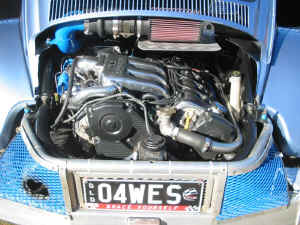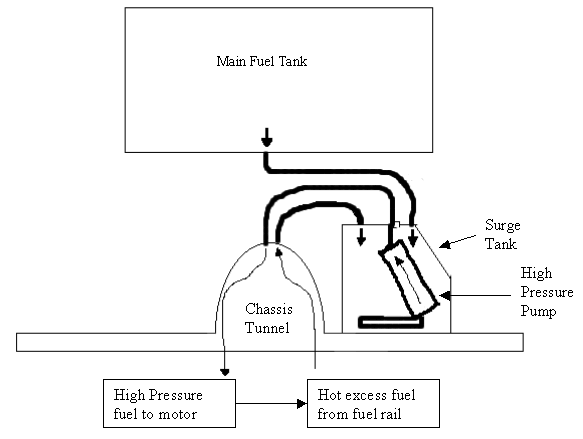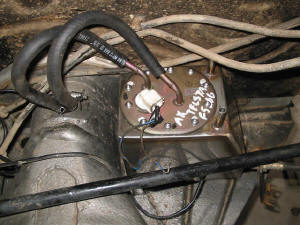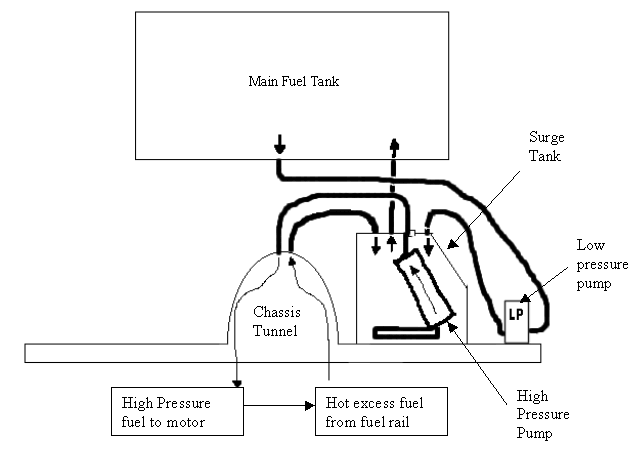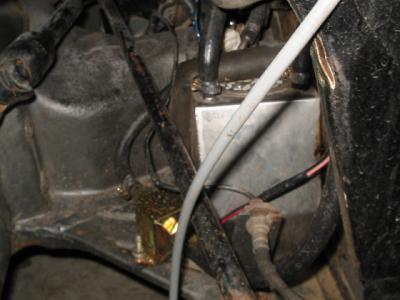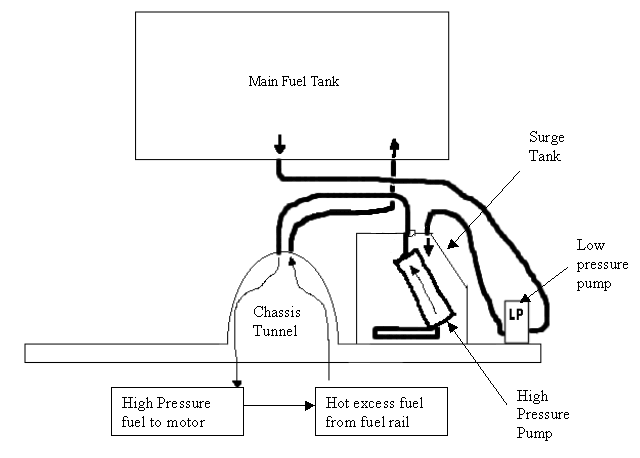Monday - 1 September
It's been a while since the last diary entry, but I have been a busy boy.
First up there was Valla http://www.clubvw.org.au/nambucca_vw_show_photos.htm
Valla was good fun as always, and I had heaps of interest in my conversion. Plenty of questions which I am happy to answer. The trip down was about 6 hours, and the engine was great on the highway. I had a couple of strange things happen on the way down, where the engine would cut for 3 to 5 seconds and then keep going. This happened every 1 to 2 hours. I fiddled with a few electrical connections and once I was at Valla the problem seemed to go away for the weekend.
Then on the way home it did it again. It seemed to do it after it was running for longer than about 1 hour. It would cut without warning, and without any splutter. It would also come back fine, without a backfire. I decided then it was fuel related. I figured it was probably something to do with my surge tank set-up. Next fuel stop I felt the surge tank with my hand, it was fairly warm. Hmmm, vapour lock maybe?
After I was back from Valla I drove around some more, and noticed after about 40min of driving I could hear bubbling in the surge tank. Pump cavitating in the hot fuel maybe? That's all I could think it was. It was quite obvious I needed to change my surge tank set-up.
My original set-up did look like this...
The advantage of the surge tank set-up shown above is that I didn't need a low pressure pump. The main tank simply gravity fed into the surge tank. The problem was the high pressure fuel went to the engine, through the hot fuel rail, then back to the surge tank. Eventually the surge tank fuel got hot enough to cause cavitation of the high pressure pump and a loss of fuel pressure (probably not good for fuel pump life either). This problem would've gotten worse in Summer. My high pressure pump was a standard in tank EFI pump. The HP pump and surge tank looked like this...
|
So I went out and bought a low pressure pump, and now my set-up looks like this...
It looks a lot more complicated, and it kinda is. I have set it up so that the low pressure pump feeds the surge tank, and it then recirculates back to the main tank. This allows the fuel to cool in the main tank. The low pressure pump only needs to supply as much fuel as the engine uses. The other advantage of this set-up is if the low pressure pump dies, it will gravity as before and the engine will still run. This set-up now looks like this (sorry about the crap pic)...
The low pressure pump is the little gold thing on the left.
|
The other alternative would've been this set-up...
This set-up uses the low pressure pump to feed
the surge tank. The high pressure pump feeds the engine, and the hot
return goes straight to the main tank. As drawn the surge tank needs
to be capable of holding pressure. The best thing to do would be to
add an overflow line to the surge tank, and return it to the main tank
(then the surge tank wouldn't be pressurized). The disadvantage of
this system is if the low pressure pump dies, the HP pump will starve.
The even bigger disadvantage is that the low pressure pump has to be
quite large and expensive, as it has to supply a higher flow of fuel
than the high pressure pump. Otherwise the high pressure pump will
starve. So I think the middle option which I am now running, is the
best option. |
So the theory is all well and good, but how does it go in practice? Well I recently went on a long Manx Club offroad trip in warm weather, driving for hours at a time, and didn't have any problems. When I got out and felt the surge tank, it felt nice and cool. There's some pictures from the day here... http://www.manxclub.org/TripReport.asp?EventId=14 .
The other thing I did is take the car for a spin with the G-tech meter. I took it relatively easy and managed 0-100kph in 6.3 seconds, and the 1/4mile in 14.8 seconds @ 152 kph. The car should be alot faster than that I think (it's still quite fast!). I think it is a combination of the following;
- The car is probably a lot heavy than I think it is - need to weigh it
- The VW gearbox must be a lot more inefficient than I thought
- Maybe my current exhaust is not letting the engine achieve 200HP - maybe a dyno test will sort the last two out.
- The car is probably even less aerodynamic than I thought.
I'm sure I will figure it out one day, but I am in no hurry.
Oh, and my thing front end arrived. Sweeeeet...
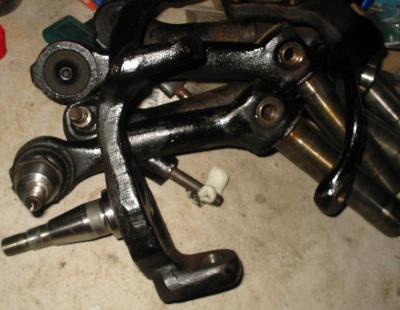
Thursday - 18 September
I've had a few comments on my surge tank diagrams. Someone suggested another good option would be to have the fuel rail return back to the fuel tank, and a gravity feed to the surge tank.
The problems with this option is the gravity must flow as much as the high pressure pump (not the small amount the engine is using). So if you go this option then use huge lines from the main tank to the surge tank, otherwise you will starve the high pressure pump. If you do that you should be fine.
For keen offroaders you may notice problems though. If the car is on an angle, and the main tank fuel outlet is above the fuel level, then the gravity feed will stop working. The high pressure pump will then use the remaining fuel in the surge tank, with the excess returning to the main tank. High pressure pumps flow up to 4L/min, so if you have a 2L surge tank, then you will have 30 seconds to drive on that hill before the surge tank runs dry.
With my set-up the fuel rail returns to the surge tank. So if my main tank fuel outlet was above the fuel level, my high pressure pump would use what's in the surge tank as before. But the unused fuel from the engine goes back to the surge tank. So I could keep running on that hill for as long as the engine will run on 2L of fuel, which would probably be at least 10 minutes.
I'm still not sure what the best way to go with the surge tank is.
I have also been thinking about why my car is slower than my Excel Dyno calculation said it would be. I eventually decided that the dyno chart that I got the KLZE power from must have been wrong in some way. So I searched japanese websites, and decided that my original HP chart for the ZE must have been wrong. It must have had quite a few mods like an exhaust and maybe porting. It just seemed to have more midrange torque than the figures I could find for the ZE. So I made some new HP and torque graphs that I thought were more accurate. I then corrected my original comparison page.
V6 Transplant - Comparison of Engines
So now the estimated times for my car more closely matches the times I am currently running. I also assumed my car with me in it weighs 1050kg. That's my bet at the moment. I will get it weighed when I get a chance and then I will know.
But I suppose you can't complain about 0-100kph in 6.3 seconds. It's at the level where hopefully it will retain some reliability. I use it offroad in remote places, so I don't want things breaking.
And besides, if the car weighs more than 1000kg I can
legally force feed it ![]() (insert evil
laugh here).
(insert evil
laugh here).
Back to my V6 transplant diary
